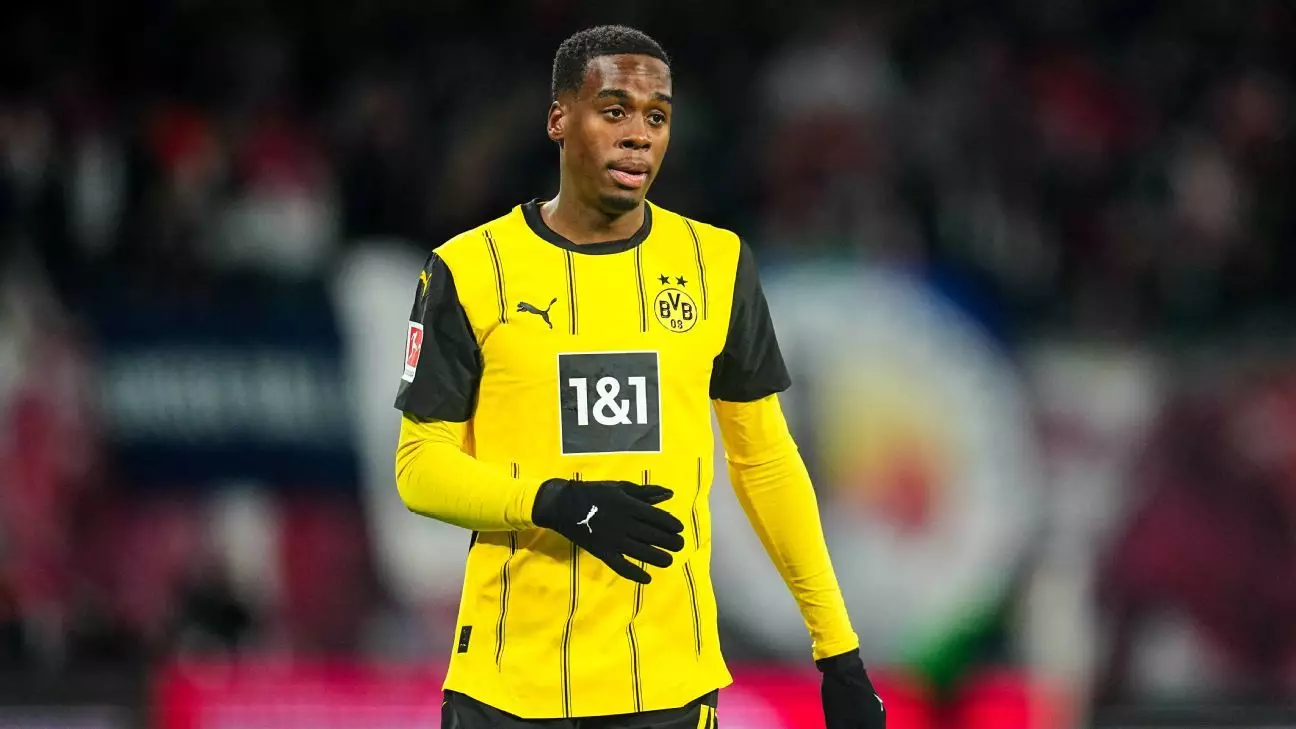In the ever-shifting landscape of European football, Chelsea’s interest in highly-rated Borussia Dortmund winger Jamie Gittens exemplifies the club’s strategic ambition to fortify their squad with young, vibrant talent. At only 20 years old, Gittens has already made waves this season, contributing ten goals in 27 appearances. However, it’s worth noting that his form has stumbled significantly, failing to register any goal or assist in the last 16 games. Such a dip raises questions: Are Chelsea chasing a promising prospect or merely another player struggling to find form?
The Stamford Bridge hierarchy is reportedly keen on Gittens, recognizing the potential payoff of nurturing a young athlete into a star player. Unlike seasoned stars who require immense financial commitments, investing in Gittens could be a testament to Chelsea’s pivoting strategy—moving away from overpriced purchases to a more sustainable model through youth development. Dortmund’s willingness to part ways with him, depending on how this summer unfolds, adds another layer of intrigue to the potential transfer.
Competition Heats Up for Victor Osimhen: A Striker’s Market
Victor Osimhen’s impending return to Napoli has sent ripples across Europe as four major clubs—Manchester United, Chelsea, Arsenal, and Juventus—position themselves to secure the prolific striker’s signature. Osimhen’s recent performances on loan at Galatasaray only serve to augment his transfer value and desirability. At 26, his experience coupled with raw talent presents a lucrative opportunity for any club that can capture him. Napoli’s flexibility in negotiations for a player with a €75 million release clause signifies a turning tide in football valuations—clubs are starting to see beyond just the sticker price.
Interestingly, the competitive nature of the race for Osimhen suggests a shift towards a more strategic approach in recruitment. Each of these clubs boasts a unique need for a striker, and the upcoming summer transfer window could drastically alter their trajectories in domestic and European competitions. For instance, positioning within the Premier League has a direct correlation with the clubs’ spending power; thus, who ultimately secures Osimhen could point to broader changes in football’s financial landscape.
Arsenal’s Shift in Focus: A Tactical Evaluation of Transfer Plans
While some clubs race to acquire top-tier talent, others shift their focus based on strategic team needs. Arsenal’s decision to pull back from pursuing Ollie Watkins highlights a more calculated approach to recruitment. While the initial interest in the Aston Villa striker showed ambition, the Gunners now appear determined to explore different options to reinforce their attack. This shift indicates a willingness to reassess priorities, which can be crucial as clubs navigate the unpredictability of player performances.
Among the potential alternatives is RB Leipzig’s Benjamin Sesko, who at 21 years old offers both youth and experience—qualities that could fit well within Arsenal’s evolving tactical framework. Additionally, exploring options like Alexander Isak becomes a more calculated gamble, indicating Arsenal’s determination to secure a player who can make an immediate impact rather than merely filling a void. The strategic decisions made in the recruitment process are often as telling of a club’s vision as the players they choose to target, underscoring the increasing importance of long-term planning in football.
Battle for Young Stars: The Prospect of Nico Paz and Arda Güler
In the realm of youth prospects, two names emerge with the potential to make significant impacts on their respective teams: Nicol Paz of Como and Arda Güler of Real Madrid. Internazionale’s interest in Paz demonstrates the club’s commitment to enhancing their squad through emerging talents. At just 20, his six goals and five assists in the Serie A show that he could be a game-changer. However, facing competition from Real Madrid, who possess a buy-back clause, places Inter in a precarious position.
Conversely, Aston Villa’s long-standing interest in Güler could speak volumes about their ambitions to compete at higher levels. Despite being a target for Liverpool, it appears that Villa holds the edge for now, illustrating how clubs outside of traditional powerhouses are gradually reshaping the narrative around recruitment. This intertwining of player aspirations and club strategies highlights the fluid nature of talent acquisition in European football where youth is not just an investment but a strategic imperative.
As clubs sift through these nuances, the landscape of next season’s transfer market begins to form—a canvas filled with ambition, strategy, and the relentless pursuit of success.

